Classic Coast: Day 2
(Note: this is day two of a four day trip. Scroll down for day one if you missed it).
In the interest of brevity I will not describe every stop along the Great Ocean Road. It’s enough to say that day two provided adventure and a mind-boggling display from Mother Nature. The cliffs of the Victoria coast are composed of limestone, a porous rock susceptible to erosion and change. The result is jagged coastlines, secluded coves and spires that jut out of the sea and appear ready to topple at any moment.
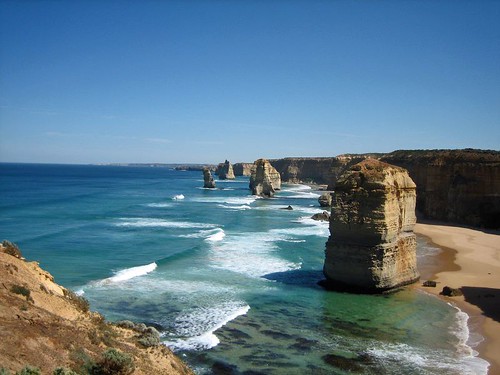
However, before heading to the coast and the helicopter, the first stop of the day was a short walk at Melba Gully in the Otway National Park. To my surprise, right there on the southern coast, right next to the Bass Strait that separates the mainland from Tasmania, is a small rainforest. The walk (to short and easy to qualify as a hike or bushwalk) took me back to my recent trip through Northern California to see the redwoods. Wet conditions, giant ferns and a look at a few Mountain Ashes, the tallest flowering trees in the world. A quick botany lesson and we were back on the road headed for the Shipwreck Coast in Port Campbell National Park.
This treacherous stretch of coastline claimed dozens of ships in the years when traffic was steady between England and the colonies. The most famous landmark is the 12 Apostles, a series of 12 limestone stacks that are best viewed from the air. One of my goals on this trip was to ride in a helicopter – check it off the list.
When I learned that the 10-minute ride over the coast was affordable, at least by my standards, I jumped. The sensation of rising straight from the ground and hovering over the coastline was beyond my expectations. How can you really know what it’s like to hover 1,000 feat above the ocean until you’ve done it? The ride was a quick back and forth over the 12 Apostles and along a stretch of the Shipwreck Coast to a famous site called Lord Ard Gorge. At the center of the picture below, behind the horseshoe shaped island, is the gorge.
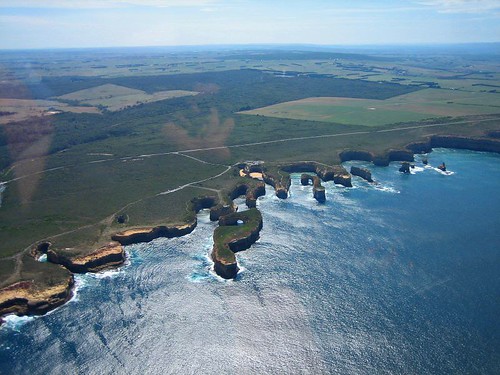
It’s impossible to get all 12 apostles into a photo because in July 2005 one of them collapsed, leaving only eight. You can just make out a pile of rubble at the center of this photo.
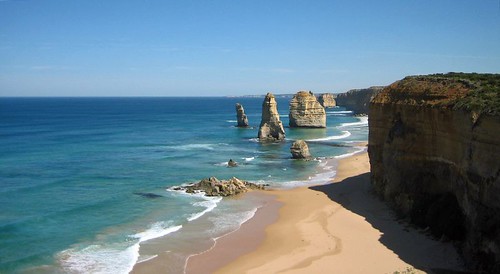
The apostles will not last forever – they are eroding at a rate of 2 cm per year – but there’s time for all of us to get out there and see them.
The next stop was Loch Ard Gorge, the site of a famous shipwreck in 1787. The site’s fame comes from the fact that two out of 55 passengers on board the clipped the Loch Ard survived after being washed into the gorge. Standing on the beach and gazing at the narrow passage to the ocean, I realized how lucky they were. And later looking at my helicopter photos drove the point home.

The rest of the day was spent hopping in and out of the bus at one scenic vista and photo op after another – London Bridge, The Grotto, and a 280-degree panorama at the Bay of Islands. They begin to blur together after a while, but each one was breathtaking. The only drawback was the scorching heat and the persistent and annoying black flies. There’s a joke that the motion of waving your hand in front of and around your face to shoo away the flies is called the “Australian Wave.” One day on the Shipwreck Coast and every member of our group mastered the technique.
The last stop of the day was at the Tower Hill game reserve for an up close look at some of Australia’s wildlife. I took a 30-minute walk and saw a handful of koalas and a trio of emus. The koalas sit there stoned and you can walk right up next to them. They are slow-moving creatures with brains the size of a walnut, but they have sharp claws and will take your eye out is provoked. Australia – land of deadly creatures.
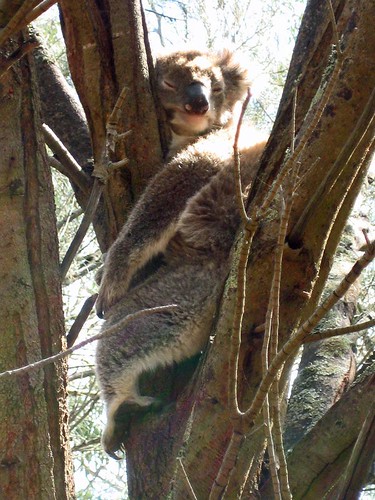
The end of the second day also marked the official end of the official Great Ocean Road. We spent the night in a hostel in Port Fairy (insert joke here). The hostel in Port Fairy is a converted old farmhouse. The men stayed in the stables, the women in the coachman’s house and our guide Lawrence enjoyed a private room in the hayloft.
Tomorrow: Deserted beaches, sinkholes and a blue lake.
In the interest of brevity I will not describe every stop along the Great Ocean Road. It’s enough to say that day two provided adventure and a mind-boggling display from Mother Nature. The cliffs of the Victoria coast are composed of limestone, a porous rock susceptible to erosion and change. The result is jagged coastlines, secluded coves and spires that jut out of the sea and appear ready to topple at any moment.

However, before heading to the coast and the helicopter, the first stop of the day was a short walk at Melba Gully in the Otway National Park. To my surprise, right there on the southern coast, right next to the Bass Strait that separates the mainland from Tasmania, is a small rainforest. The walk (to short and easy to qualify as a hike or bushwalk) took me back to my recent trip through Northern California to see the redwoods. Wet conditions, giant ferns and a look at a few Mountain Ashes, the tallest flowering trees in the world. A quick botany lesson and we were back on the road headed for the Shipwreck Coast in Port Campbell National Park.
This treacherous stretch of coastline claimed dozens of ships in the years when traffic was steady between England and the colonies. The most famous landmark is the 12 Apostles, a series of 12 limestone stacks that are best viewed from the air. One of my goals on this trip was to ride in a helicopter – check it off the list.
When I learned that the 10-minute ride over the coast was affordable, at least by my standards, I jumped. The sensation of rising straight from the ground and hovering over the coastline was beyond my expectations. How can you really know what it’s like to hover 1,000 feat above the ocean until you’ve done it? The ride was a quick back and forth over the 12 Apostles and along a stretch of the Shipwreck Coast to a famous site called Lord Ard Gorge. At the center of the picture below, behind the horseshoe shaped island, is the gorge.

It’s impossible to get all 12 apostles into a photo because in July 2005 one of them collapsed, leaving only eight. You can just make out a pile of rubble at the center of this photo.

The apostles will not last forever – they are eroding at a rate of 2 cm per year – but there’s time for all of us to get out there and see them.
The next stop was Loch Ard Gorge, the site of a famous shipwreck in 1787. The site’s fame comes from the fact that two out of 55 passengers on board the clipped the Loch Ard survived after being washed into the gorge. Standing on the beach and gazing at the narrow passage to the ocean, I realized how lucky they were. And later looking at my helicopter photos drove the point home.

The rest of the day was spent hopping in and out of the bus at one scenic vista and photo op after another – London Bridge, The Grotto, and a 280-degree panorama at the Bay of Islands. They begin to blur together after a while, but each one was breathtaking. The only drawback was the scorching heat and the persistent and annoying black flies. There’s a joke that the motion of waving your hand in front of and around your face to shoo away the flies is called the “Australian Wave.” One day on the Shipwreck Coast and every member of our group mastered the technique.
The last stop of the day was at the Tower Hill game reserve for an up close look at some of Australia’s wildlife. I took a 30-minute walk and saw a handful of koalas and a trio of emus. The koalas sit there stoned and you can walk right up next to them. They are slow-moving creatures with brains the size of a walnut, but they have sharp claws and will take your eye out is provoked. Australia – land of deadly creatures.

The end of the second day also marked the official end of the official Great Ocean Road. We spent the night in a hostel in Port Fairy (insert joke here). The hostel in Port Fairy is a converted old farmhouse. The men stayed in the stables, the women in the coachman’s house and our guide Lawrence enjoyed a private room in the hayloft.
Tomorrow: Deserted beaches, sinkholes and a blue lake.

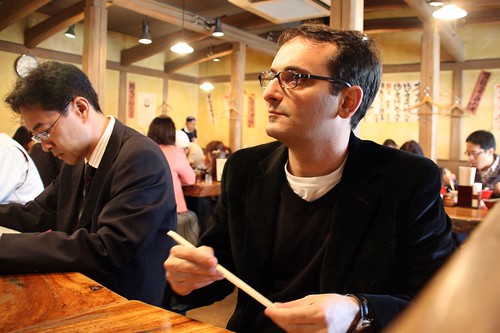

0 Comments:
Post a Comment
<< Home